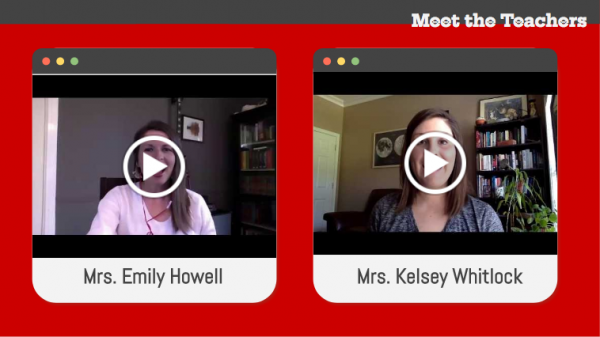Teachers prepare for virtual school learning

Submitted photo
Pictured is a screenshot from an in-progress unit of AP Language and Composition presented on Google Slides for students who will be learning virtually from home this fall. Many slides include pre-recorded videos of the teachers embedded along with text instruction.
Update: New attendance totals for the teacher training have been added — Aug. 3
With the start of the 2020-21 school year just around the corner amidst the novel coronavirus pandemic, this week marked the end of a month of professional development for the Lincoln Parish School District’s junior high and high school teachers held over Google Meet.
These sessions were aimed at preparing teachers to deliver instruction in face-to-face, hybrid and fully online formats this fall. Since the district’s reopening plan was released, school board central office staff have been adamant that the parish’s virtual program will not be the same as it was in the spring, when schools were forced to move online on the fly when the stay-at-home order went into effect.
This time, teachers will be following the “Lincoln Parish Distance/Hybrid Learning Guidelines,” an extensive document developed by the district’s English Language Arts Facilitator Emily Howell and a team of more than 30 teachers, counselors and administrators across the parish.
“The goal was to basically all get on the same page on how to do this,” Howell said. “In the spring, we didn’t have time to get together and decide what the best practices were, but now we’ve really gotten organized.”
Howell said nearly 1,200 teachers attended at least part of the four weeks of training on the virtual program, which, among other things, showed instructors how to use the various features available on Google Classroom — the main platform through which online students will access their schoolwork.
The guidelines break down common practices for the parish involving “synchronous” learning, meaning live interactions between students and teachers, and “asynchronous” learning, referring to lessons that students can access on-demand at their own pace.
Asynchronous lessons will often be presented in slideshows through Google Slides, with pre-recorded videos from teachers embedded in the slides. The videos may be linked through You-Tube and show the teachers talking to the camera about the lessons, or they may be recorded through Screencastify, which allows for teachers to capture their own computer screens and share that footage with students.
Synchronous instruction will come through video conferencing apps like Zoom. Howell said both asynchronous and synchronous methods may be used, but secondary grades will focus more on the former.
“There are some limitations to live teaching,” she said. “If a student is at home doing virtual learning, they may or may not be available from 8:30 to 9:30, for example. I’ve found that any time we try to do something live or synchronous, that automatically cuts down on the amount of kids who can participate, for a variety of reasons.”
Elementary grades will focus more on live virtual instruction when possible, but other methods will still be a part of the process. Simsboro School Principal Rusty Farrar said it may prove difficult to always give teachers the opportunity to teach at-home students live when there are also students on campus.
“There’s going to be some live stuff in elementary,” Farrar said. “We’re trying to give teachers a schedule where they can do some live time with students, and then the rest of it would be recorded, with video assignments posted on Google Classroom.”
No matter the platform, Farrar said parent involvement will be crucial for virtual learning at the elementary level to be successful.
“If a parent has signed their child up in one of the younger grades, and they don’t get involved, the child is not going to receive the full benefit from virtual learning,” he said.
Schools will be holding staggered prep days before school starts for parents, including those of students in the virtual program, to come to the classroom, meet the teacher, and learn exactly how instruction will work for their students.
The guidelines instruct teachers to plan their content for distance and hybrid learning one week at a time. Questions, resources and videos will go up on Google Classroom, and students will have the opportunity throughout the week to interact with their teachers and work with other students to solve problems via platforms like Google Docs.
Both Howell and Farrar said a hidden benefit that has come out of the need to prepare virtual lessons is that teachers from various grade levels, subjects and even schools are working together more than before.
“One thing that I think has been really special about this time is all five secondary schools are all working together, and teachers have been collaborating,” Howell said. “We’ve never really had that before.”
Farrar said the start of the school year will bring with it an “adjustment period” as teachers get used to providing instruction in several different formats. But he said he knows the faculty will rise to the challenge.
“I’ve got some experienced teachers who’ve been successful in what they’re doing for many, many years, and now we’re having to change that a little bit,” he said. “But do I think they can handle it? Absolutely. They will get where they need to be in a very short amount of time.”

